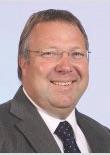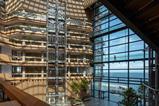
For SAS Software, a key component of its benefits philosophy is that it offers its employees choice to enable them to pick benefits that support them throughout their career, while retaining a sense of being a paternalistic employer.
Its UK headquarters, situated on a 110-acre estate on the bank of the River Thames, provides impressive staff facilities, including a football pitch, cricket pitch, employee allotments and even a local dry-cleaning drop-off and pick-up service. The software firm strongly believes that employee benefits need to be relevant to staff. Chris Carter, head of rewards, says: “Employees are individual people. Our benefits have to be able to reflect their own lifestyles, so our philosophy is still relatively paternalistic, but they should be able to pick and choose the benefits that are applicable to them, at the time when they need [them].”
Retirement saving
Addressing the impact of the changes to the annual allowance and lifetime allowance on high earners has been a key area of focus for SAS in recent months. The organisation has a number of employees that could potentially be affected, so it had to assess how it would be able to maintain motivation levels among affected employees, while managing the government legislation.
Carter explains: “We’ve retained a bit of our [organisational] philosophy of being quite paternalistic in as much as that we want people to be able to save to retire. So we’re doing all we can to encourage people to save for retirement.”
To address the reductions in the annual and lifetime allowances, the organisation set up the SAS saving account, which went live on 6 April 2016. Where employees are affected by the change in annual allowance or lifetime allowance, rather than giving them cash in place of pension contributions, SAS offers an alternative savings mechanism. For example, employees can invest, through the savings account, in stocks and shares, or an individual savings account.
While the organisation cannot dictate that an employee must save, Carter believes that the alternative savings method is more in line with the spirit of a pension. “All we can do is encourage them and make it as easy as possible,” he says. “We’ve done that through salary deduction, so it goes straight into a savings account that is personal to them.”
The savings scheme was set up to be zero cost to the organisation; employees are paid the cash amount minus the organisation’s costs for tax and national insurance (NI).
In addition, this year SAS has included a new savings scheme within its flexible benefits offering, My Choice. The organisation’s pension contribution levels are dependent upon length of service: for up to two years’ service, the employer pays 6.5%, and over two years, this stands at 10%. The employee pays a minimum of 2.5%. This year, SAS is allowing those with more than two years’ service to reduce their employer contribution down to 6.5% and take the difference to spend on benefits, or as cash, less the organisation's costs for tax and NI.
“We keep the employee contribution low because we want to actively encourage people to join the pension scheme early in their careers, and not have to say, ‘the reason I haven’t joined is because I can’t afford it’, says Carter. “We felt that [a matching scheme] would dissuade, particularly people who are new into work, or those with a new family and with here-and-now needs. That’s the paternalism coming out, we want people to save for their retirement.”
Employee choice
It is this approach to employee choice that has shaped the benefits offering at SAS, along with the acknowledgement that the employee base is becoming a lot more diverse in terms of lifestyles. “We’re now seeing five generations in the workforce,” says Carter. “Within those five generations, [there are] a multitude of lifestyles: people are widowed, divorced, married, have grandchildren, families. It’s all about trying to offer a competitive package that employees feel motivated to use. It’s that old adage that I don’t want benefits to be the reason people leave, but I do appreciate that benefits won’t hold people alone. But it’s got to be that foundation level of satisfying their base needs while they’re here at work.”
Along with core benefits, SAS offers a flex fund that all employees are able to take up if they choose. It is not compulsory so if employees do not select any benefits at the annual enrolment window, or choose to take the pot as cash, they will lose it. But with the scheme achieving 99% take-up, many employees value the benefits offering.
Carter believes that one of the most under-valued benefits by employees is income protection, which is offered to state pension age. “We want to look out for their welfare, even if as an employee they don’t want that. The employee thinks about the here and now, as an employer we’ve got a duty to say, ‘how can we satisfy the here and now, but what is the what if? What if you’re suddenly struck down, what if you can’t work? What’s the [organisation's] obligation to your family?’” he explains. “So we try and balance that but it’s becoming harder because employees don’t recognise that they have that benefit. For us, we want employees to be focused on their job knowing that we’ve got their families taken care of.”
Employee wellbeing
The organisation's wellbeing focus comprises three key areas and promoted throughout the year. The first is a health and wellbeing session, usually in the first quarter of the year. This will include things such as weight and height measurements, biometric machines, and this year a nutritionist came on site to talk to employees. In addition, the employer brings experts in certain fields to hold awareness sessions on breast cancer or prostate cancer, for example.
The second focus is on financial wellbeing, with on-site sessions held for staff. Last year, this focused predominantly on pensions and retirement savings, and saw great take-up from employees.
The third focus is on mental health; last year SAS piloted some online self-mediation sessions for staff.
SAS introduced the wellbeing theme in order to support employees and meet the needs of the changing workforce. “If you do something piecemeal, people forget about it, so we’ve tried to incorporate it into one wellbeing theme,” explains Carter. “The healthy activities were something we wanted to do because, with an ageing population, there’s predicted to be more illness among the over 50s. Mental health is a growing concern, so we wanted to bring this out head on and be proactive in supporting people.”
The challenge ahead for SAS is that it continues to offer benefits that are appreciated by staff, but that are also beneficial to the organisation. “The most important strategy is that we provide benefits that the employees value but also underpin the company culture. There’s also the cost equation in that, so [we] try and balance those three elements. There’s no point offering a benefit that nobody wants or uses, that’s not good value for money,” says Carter.
SAS Software at a glance
SAS is an analytics software organisation, which has been operating for 40 years. Its main focus is on business software: it analyses vast amounts of big data, and also uses it for predictive analytics.
SAS has been in the UK for 35 years and operates across all industry sectors. It has a research and development arm that focuses on public security.
SAS has around 750 employees in the UK, of which 70% are male and has an average age of 42.
Business objectives
- To continue to grow its presence in the big-data market.
- To continue its phased reorganisation and change from a country-based to global-based operating model.
Career history

Chris Carter, head of reward, UK and Ireland, joined SAS Software in 2010 as an HR business partner. He then moved into the reward role in 2013. Previously, he held business partner roles in technology organisations, but the early part of his career was spent as a telecoms engineer. The change in career is a proud achievement for Carter. “That made my eyes open to say, anything is possible if you want to do it.”
Carter has carried that philosophy through to his work at SAS, and appreciates being able to introduce new schemes that benefit both the organisation and its employees.
“It’s probably the first time I’ve been in a small [organisation] with more autonomy and control of direction: it was my decision to bring in flexible benefits. Although we don’t advertise it very much, we’re quite a progressive [organisation] from a benefits and reward perspective. A lot of that is down to me seeing where we need to go, listening to employees, and driving stuff through.”
The benefits offered by SAS Software
Pension
- Defined contribution (DC) stakeholder plan for all employees as a core benefit.
- Employer contribution levels are 6.5% for up to two years' service, 10% for over two years.
- Minimum employee contribution of 2.5%.
- Employees with more than two years’ service can choose to reduce their employer contribution to 6.5% and take the difference as cash or add to their flex fund.
- Additional voluntary contributions (AVC) through flex.
Healthcare and wellbeing
- Private medical insurance (PMI) as a core benefit for employees only.
- Employees cover dependants through the flex scheme.
- Life assurance at four-times salary as a core benefit. Employees can trade down to two-times or up to 10-times salary through flex.
- Group income protection as a core benefit.
- Dental insurance through flex.
- Critical illness insurance for employees and their partners through flex.
- Health cash plans through flex.
- Gym membership through flex.
- Health screening through flex.
Travel
- Salary sacrifice car scheme.
- Bikes-for-work scheme.
- Travel insurance through flex.
Work-life balance
- 25 days of holiday. Employees can buy or sell up to five days a year through flex.
- Enhanced parental leave.
- Informal work from home one day a week.
- Birthday given as holiday.
- Childcare vouchers scheme.
Other benefits
- Tastecard and Gourmet card through flex.
- Payroll giving through flex.
- Salary sacrifice gadget scheme.
- Shopping discount portal.
- Local discounts.
- Long service vouchers every five years.
Social activities and on-site services
- Free tea, coffee and juices.
- Subsidised restaurant at UK headquarters.
- Sports club, which runs an internal global football tournament.
- Photography club with studio for employees at the UK headquarters.
- Employee allotments at UK headquarters.
- Cricket club at UK headquarters.
- Football pitch at UK headquarters.
- Dry-cleaning service and personal post at UK headquarters.




































